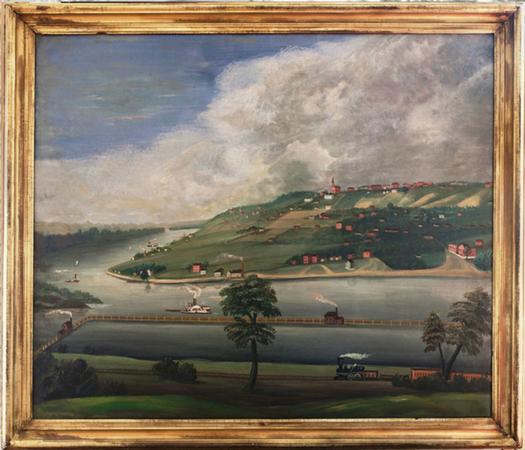|
William Marks (Mormonism)
William Marks (November 15, 1792 – May 22, 1872) was a leader in the early days of the Latter Day Saint movement and was a member of the First Presidency (Community of Christ), First Presidency in the Reorganized Church of Jesus Christ of Latter Day Saints. Marks is mentioned in the ''Doctrine and Covenants'' in sections 117 and 124 of the Church of Jesus Christ of Latter-day Saints (LDS Church) edition and in section 115 of the Community of Christ edition. Early life Marks was born in Rutland (town), Vermont, Rutland, Vermont on November 15, 1792 to Cornwall (or Cornell) Marks and Sarah Goodrich. He married Rosannah Robinson on May 2, 1813 and was the father of five children. Early church membership Marks was baptized a member of Church of Christ (Latter Day Saints), Church of Christ sometime in April 1835 in New York (state), New York and ordained a Priest (Latter Day Saints), priest shortly thereafter. He was ordained an Elder (Latter Day Saints), elder on June 3, 1836. ... [...More Info...] [...Related Items...] OR: [Wikipedia] [Google] [Baidu] |
Rutland (town), Vermont
Rutland is a town in Rutland County, Vermont, in the United States. As of the 2020 census, the population was 3,924. The Town of Rutland completely surrounds the City of Rutland, which is incorporated separately from the town. The villages of the town effectively comprise the inner suburbs of the City of Rutland. History The town was originally granted in 1761 by Governor Benning Wentworth as one of the New Hampshire Grants. He named it after John Manners, 3rd Duke of Rutland. It is also recorded that John Murray who was the first named proprietor and from Rutland named it. It was one of the most successful of those grants because of the excellent farmland and gentle topography. In the early 19th century, small high-quality marble deposits were discovered in Rutland, and in the 1830s a large deposit of nearly solid marble of high quality was found in what is now West Rutland. By the 1840s small firms had begun operations, but marble quarries only became profitable when th ... [...More Info...] [...Related Items...] OR: [Wikipedia] [Google] [Baidu] |
Rebaptism
Rebaptism in Christianity is the baptism of a person who has previously been baptized, usually in association with a denomination that does not recognize the validity of the previous baptism. When a denomination rebaptizes members of another denomination, it is a sign of significant differences in theology. Churches that practice exclusive believer's baptism, including Baptists and Churches of Christ, rebaptize those who were baptized as infants because they do not consider infant baptism to be valid. Rebaptism is generally associated with: * Anabaptism, from Greek ''ἀνα-'' (re-) and ''βαπτίζω'' (I baptize) * Denominations that require believer's baptism, such as the Baptist Churches * Mormonism * Oneness Pentecostal churches Catholic Church The Catholic Church holds that rebaptism is not possible:1272. Incorporated into Christ by Baptism, the person baptized is configured to Christ. Baptism seals the Christian with the indelible spiritual mark (''character'') of hi ... [...More Info...] [...Related Items...] OR: [Wikipedia] [Google] [Baidu] |
Nauvoo, Illinois
Nauvoo ( ; from the ) is a small city in Hancock County, Illinois, United States, on the Mississippi River near Fort Madison, Iowa. The population of Nauvoo was 950 at the 2020 census. Nauvoo attracts visitors for its historic importance and its religious significance to members of several groups: The Church of Jesus Christ of Latter-day Saints; the Community of Christ, formerly the Reorganized Church of Jesus Christ of Latter Day Saints (RLDS); other groups stemming from the Latter Day Saint movement; and the Icarians. The city and its immediate surrounding area are listed on the National Register of Historic Places as the Nauvoo Historic District. History The area of Nauvoo was first called Quashquema, named in honor of the Native American chief who headed a Sauk and Fox settlement numbering nearly 500 lodges. By 1827, white settlers had built cabins in the area. By 1829 this area of Hancock County had grown sufficiently so that a post office was needed and in 1832 the t ... [...More Info...] [...Related Items...] OR: [Wikipedia] [Google] [Baidu] |
.jpg)
